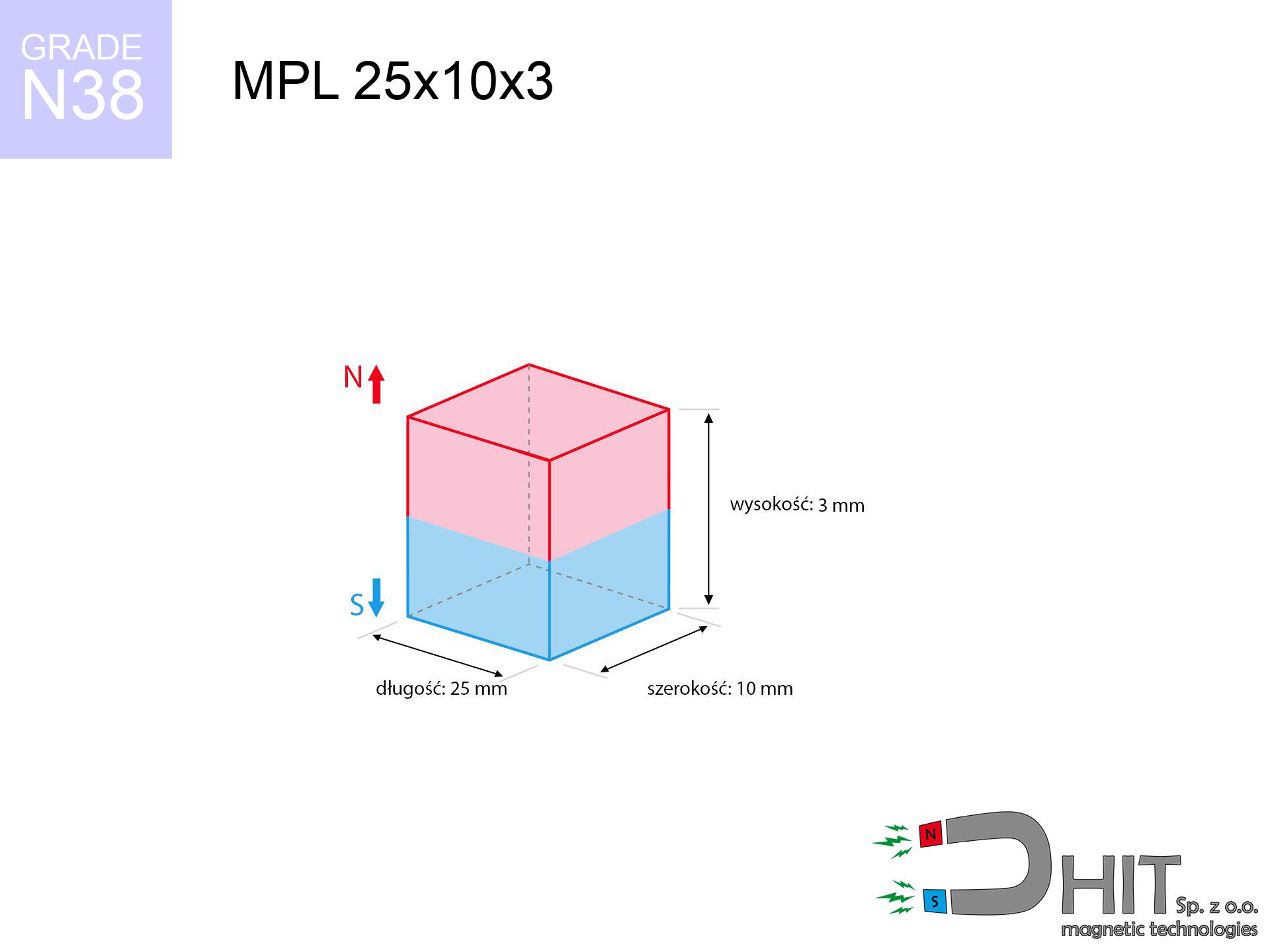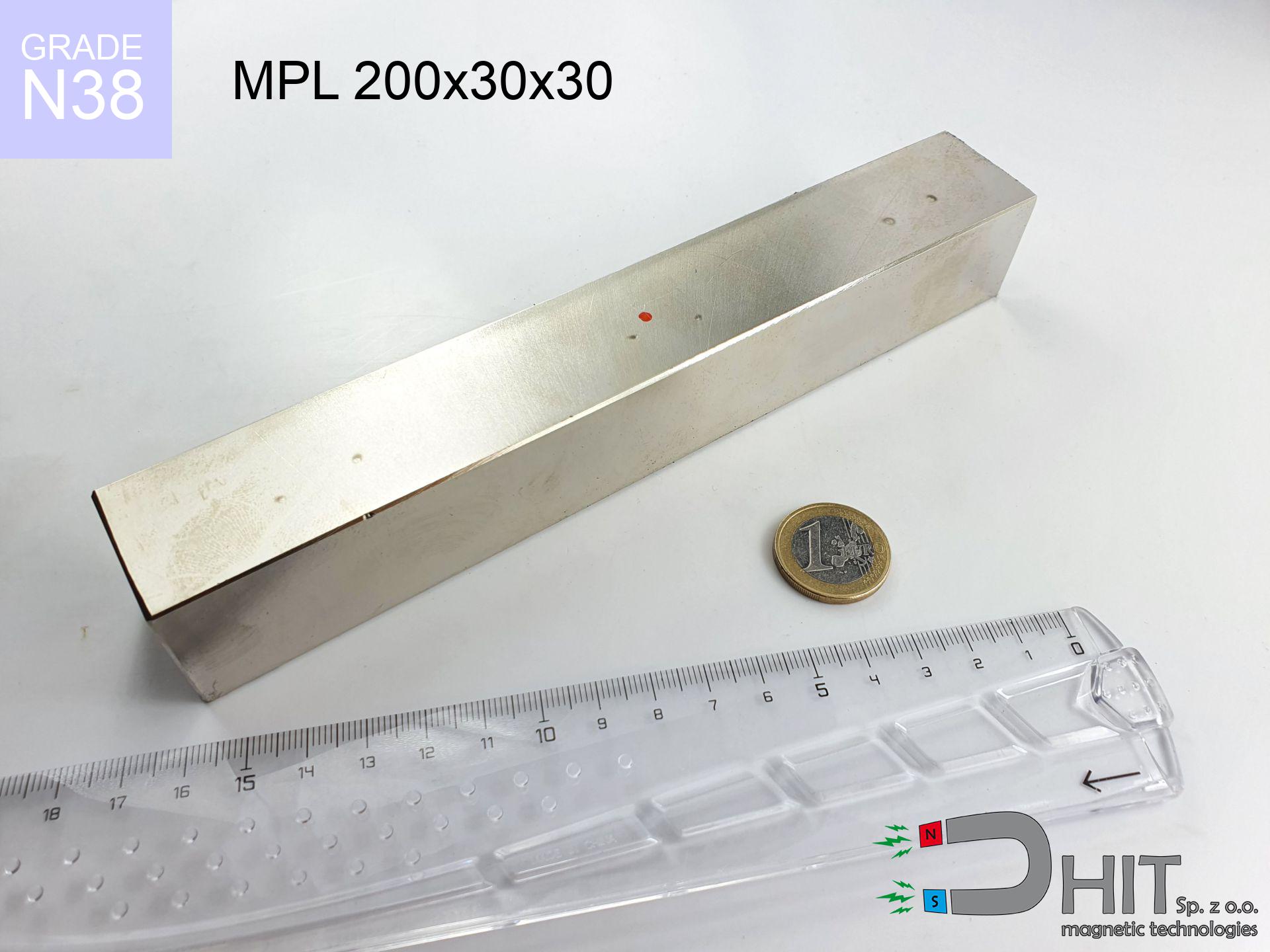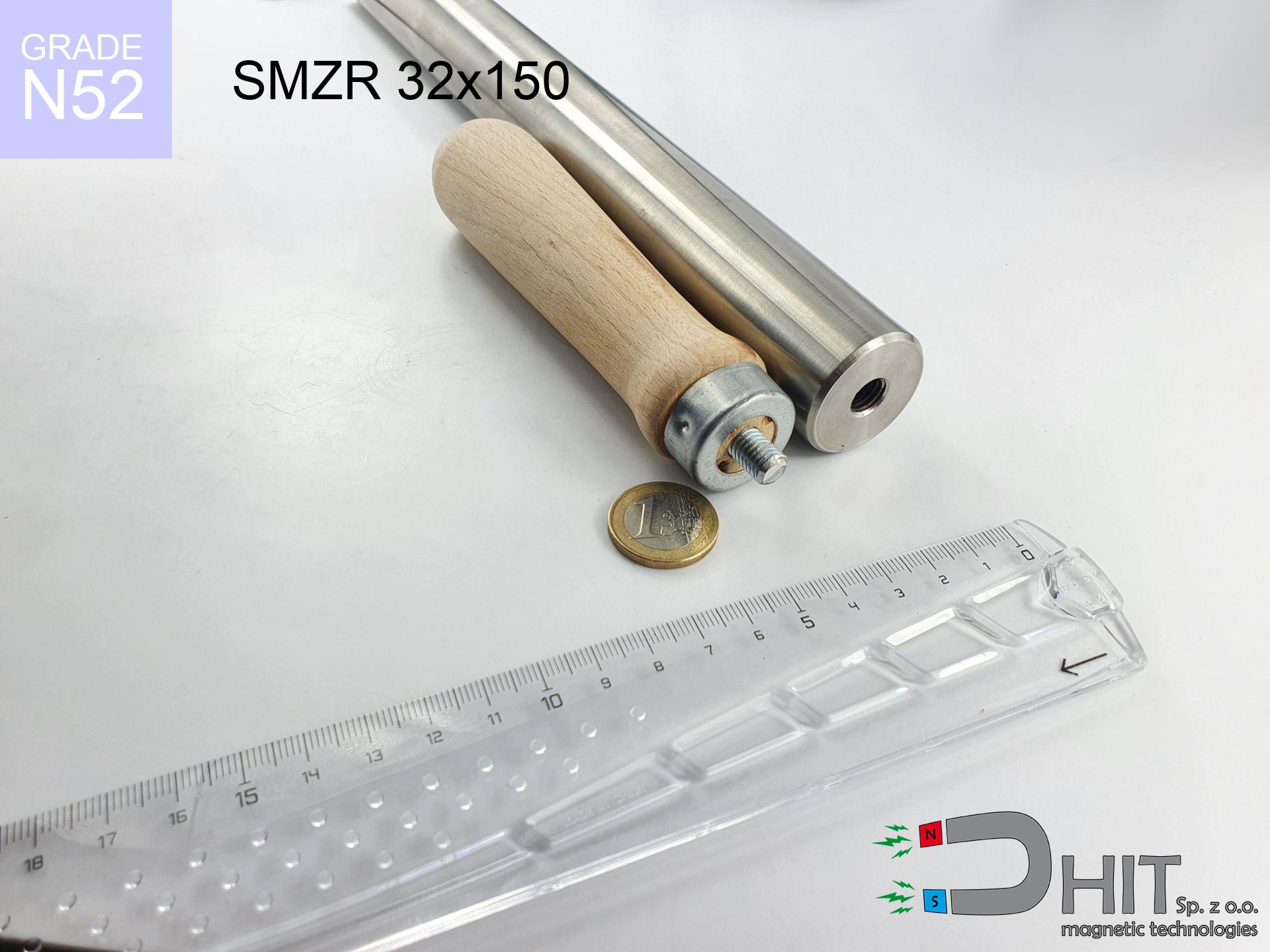MPL 25x10x3 / N38 - lamellar magnet
lamellar magnet
Catalog no 020387
GTIN: 5906301811862
length [±0,1 mm]
25 mm
Width [±0,1 mm]
10 mm
Height [±0,1 mm]
3 mm
Weight
5.63 g
Magnetization Direction
↑ axial
Load capacity
3.75 kg / 36.77 N
Magnetic Induction
230.69 mT
Coating
[NiCuNi] nickel
3.57 ZŁ with VAT / pcs + price for transport
2.90 ZŁ net + 23% VAT / pcs
bulk discounts:
Need more?Looking for a better price?
Pick up the phone and ask
+48 22 499 98 98
if you prefer send us a note through
contact form
the contact form page.
Lifting power and shape of magnetic components can be reviewed using our
magnetic mass calculator.
Orders placed before 14:00 will be shipped the same business day.
Magnetic properties of material N38
Physical properties of sintered neodymium magnets Nd2Fe14B at 20°C
Shopping tips
Pros as well as cons of NdFeB magnets.
Apart from their consistent magnetic energy, neodymium magnets have these key benefits:
- They virtually do not lose strength, because even after 10 years the decline in efficiency is only ~1% (according to literature),
- Neodymium magnets remain highly resistant to magnetic field loss caused by external field sources,
- By covering with a smooth layer of silver, the element presents an modern look,
- Magnets are characterized by exceptionally strong magnetic induction on the active area,
- Neodymium magnets are characterized by extremely high magnetic induction on the magnet surface and can function (depending on the form) even at a temperature of 230°C or more...
- In view of the possibility of accurate molding and adaptation to unique projects, NdFeB magnets can be modeled in a broad palette of geometric configurations, which makes them more universal,
- Versatile presence in innovative solutions – they serve a role in hard drives, motor assemblies, medical devices, as well as industrial machines.
- Compactness – despite small sizes they offer powerful magnetic field, making them ideal for precision applications
Drawbacks and weaknesses of neodymium magnets: tips and applications.
- To avoid cracks under impact, we suggest using special steel holders. Such a solution protects the magnet and simultaneously improves its durability.
- We warn that neodymium magnets can lose their strength at high temperatures. To prevent this, we recommend our specialized [AH] magnets, which work effectively even at 230°C.
- When exposed to humidity, magnets usually rust. To use them in conditions outside, it is recommended to use protective magnets, such as those in rubber or plastics, which secure oxidation and corrosion.
- We suggest casing - magnetic mechanism, due to difficulties in producing threads inside the magnet and complex forms.
- Potential hazard related to microscopic parts of magnets pose a threat, if swallowed, which gains importance in the context of child health protection. Furthermore, small elements of these magnets can disrupt the diagnostic process medical after entering the body.
- Higher cost of purchase is one of the disadvantages compared to ceramic magnets, especially in budget applications
Highest magnetic holding force – what it depends on?
Magnet power was defined for optimal configuration, assuming:
- on a base made of structural steel, optimally conducting the magnetic flux
- with a thickness no less than 10 mm
- with an polished contact surface
- with total lack of distance (no impurities)
- for force acting at a right angle (in the magnet axis)
- in neutral thermal conditions
Determinants of practical lifting force of a magnet
Please note that the magnet holding may be lower subject to elements below, in order of importance:
- Gap between magnet and steel – every millimeter of distance (caused e.g. by veneer or dirt) significantly weakens the pulling force, often by half at just 0.5 mm.
- Pull-off angle – note that the magnet has greatest strength perpendicularly. Under sliding down, the holding force drops significantly, often to levels of 20-30% of the maximum value.
- Plate thickness – insufficiently thick sheet causes magnetic saturation, causing part of the flux to be lost into the air.
- Material composition – different alloys attracts identically. High carbon content weaken the attraction effect.
- Smoothness – full contact is possible only on smooth steel. Any scratches and bumps create air cushions, reducing force.
- Temperature – heating the magnet causes a temporary drop of induction. Check the thermal limit for a given model.
* Holding force was measured on the plate surface of 20 mm thickness, when a perpendicular force was applied, whereas under attempts to slide the magnet the holding force is lower. Moreover, even a minimal clearance {between} the magnet and the plate decreases the lifting capacity.
Safe handling of neodymium magnets
Do not overheat magnets
Monitor thermal conditions. Exposing the magnet to high heat will destroy its magnetic structure and pulling force.
Shattering risk
NdFeB magnets are sintered ceramics, meaning they are very brittle. Clashing of two magnets will cause them cracking into small pieces.
Bone fractures
Watch your fingers. Two large magnets will snap together instantly with a force of several hundred kilograms, destroying everything in their path. Exercise extreme caution!
GPS and phone interference
Navigation devices and smartphones are highly susceptible to magnetism. Close proximity with a strong magnet can ruin the internal compass in your phone.
Allergy Warning
Medical facts indicate that the nickel plating (the usual finish) is a potent allergen. If you have an allergy, prevent touching magnets with bare hands and select coated magnets.
Combustion hazard
Mechanical processing of neodymium magnets carries a risk of fire risk. Neodymium dust oxidizes rapidly with oxygen and is hard to extinguish.
Handling rules
Handle with care. Rare earth magnets act from a distance and snap with massive power, often quicker than you can move away.
Medical implants
Warning for patients: Strong magnetic fields affect medical devices. Maintain at least 30 cm distance or ask another person to handle the magnets.
No play value
Adult use only. Tiny parts pose a choking risk, leading to intestinal necrosis. Store away from kids and pets.
Electronic hazard
Equipment safety: Neodymium magnets can damage data carriers and delicate electronics (heart implants, hearing aids, mechanical watches).
Warning!
Details about hazards in the article: Magnet Safety Guide.




![AM ucho [M12] - magnetic accessories AM ucho [M12] - magnetic accessories](https://cdn3.dhit.pl/graphics/products/am-ucho-m12-maz.jpg)


![UMGZ 16x13x5 [M4] GZ / N38 - magnetic holder external thread UMGZ 16x13x5 [M4] GZ / N38 - magnetic holder external thread](https://cdn3.dhit.pl/graphics/products/um-16x13x5-m4-gz-cor.jpg)

